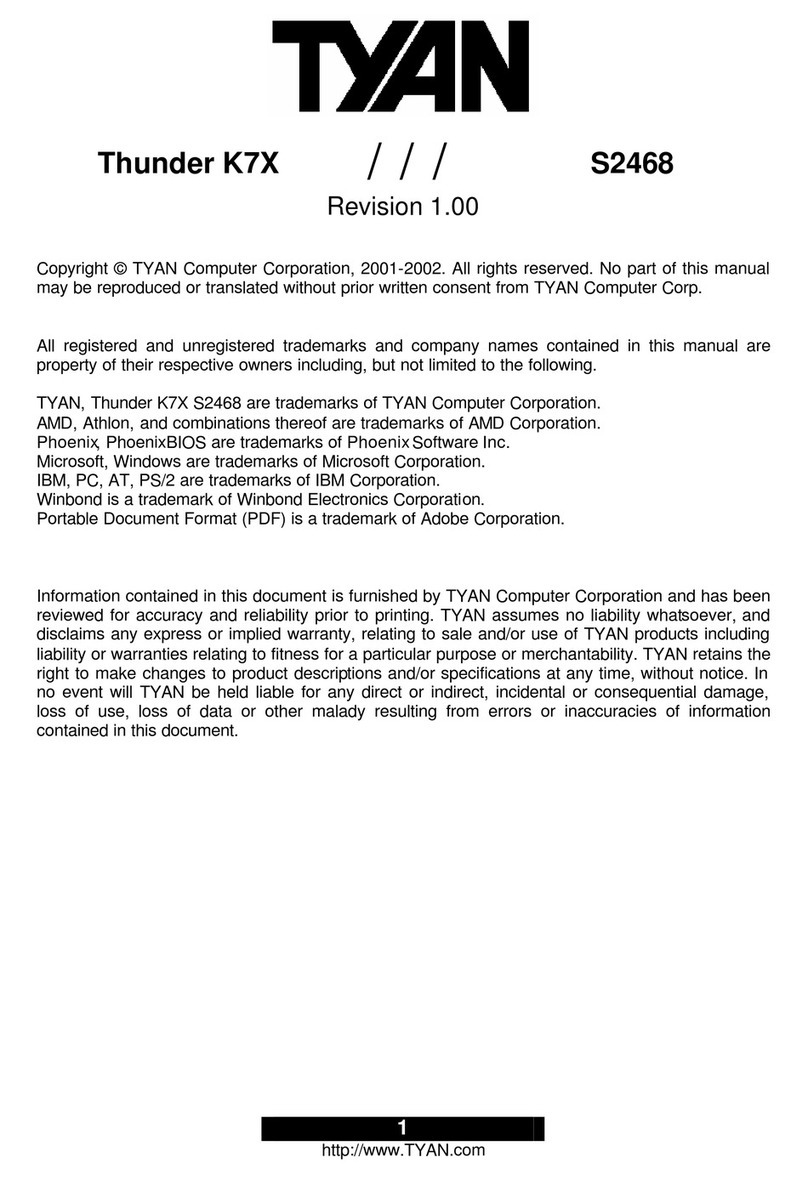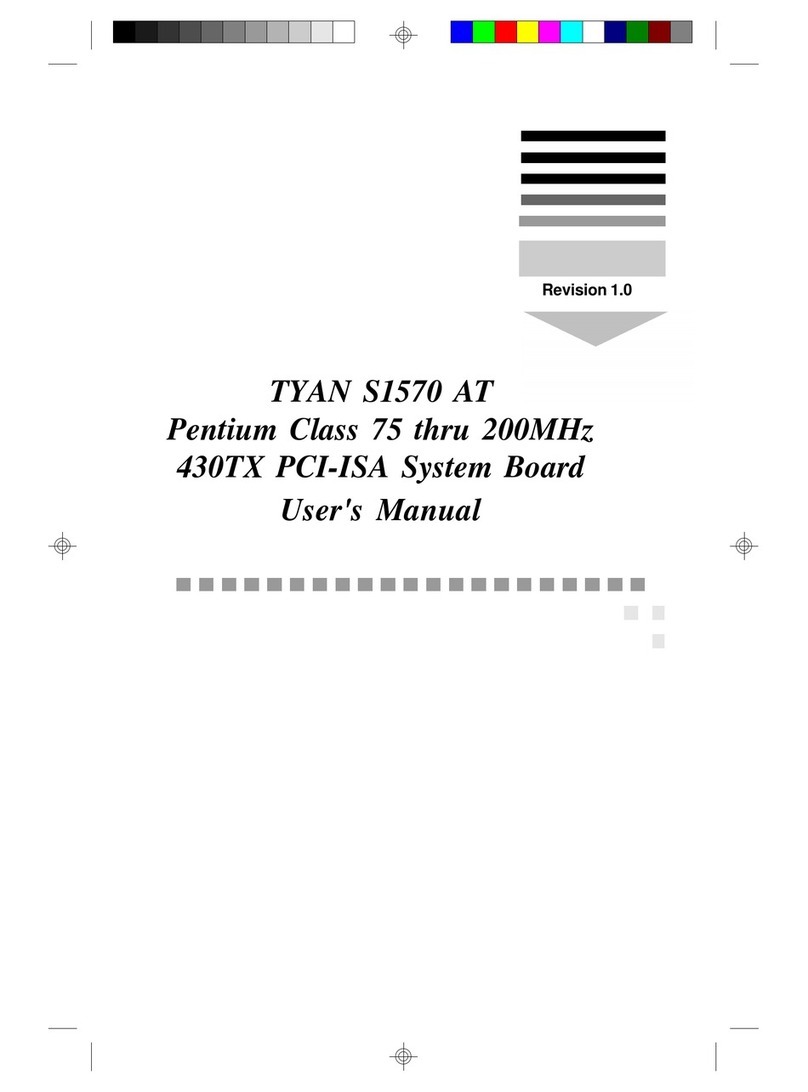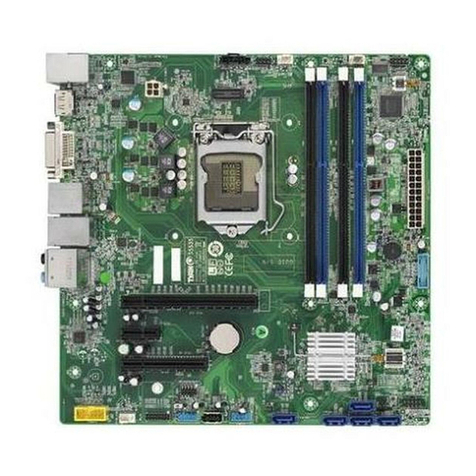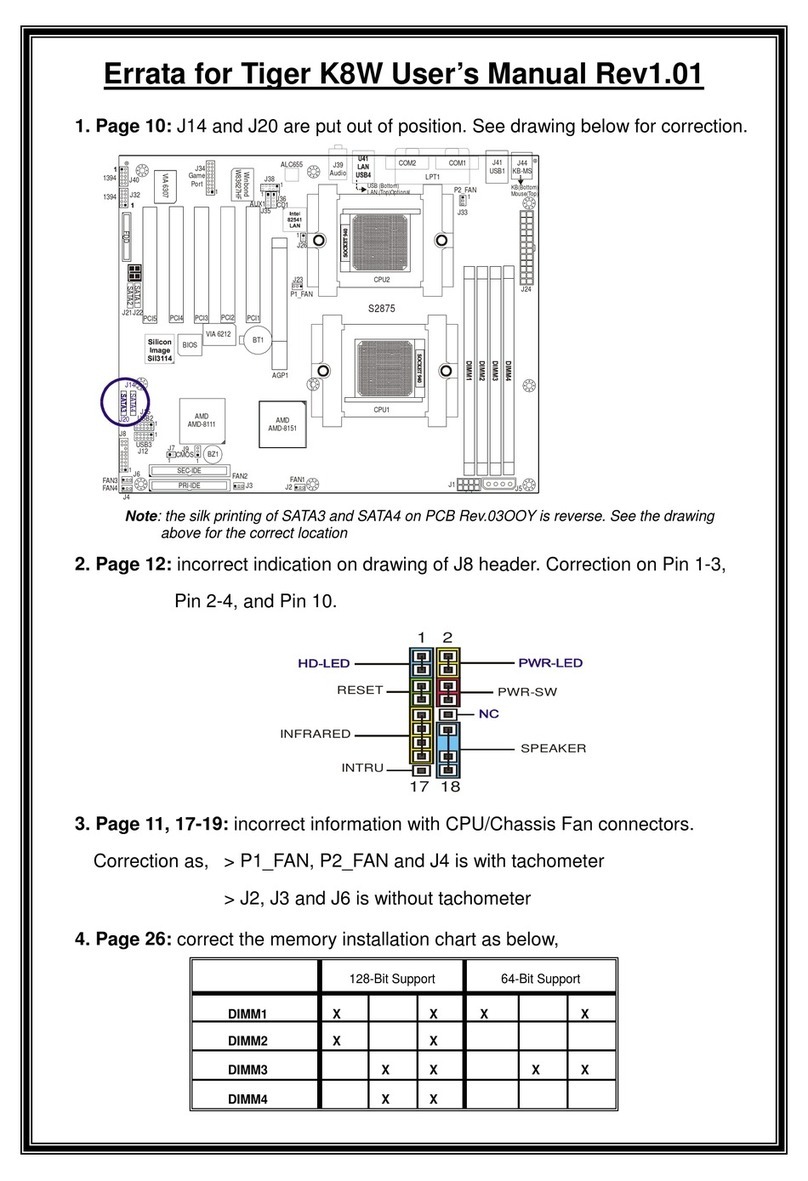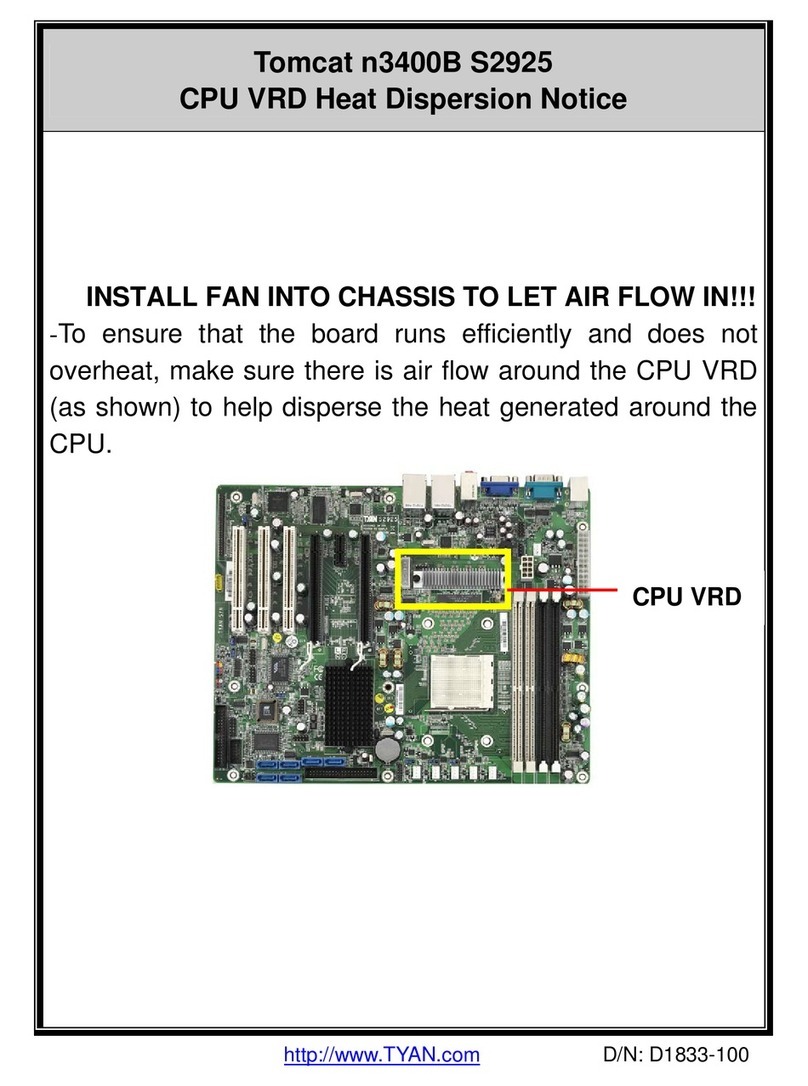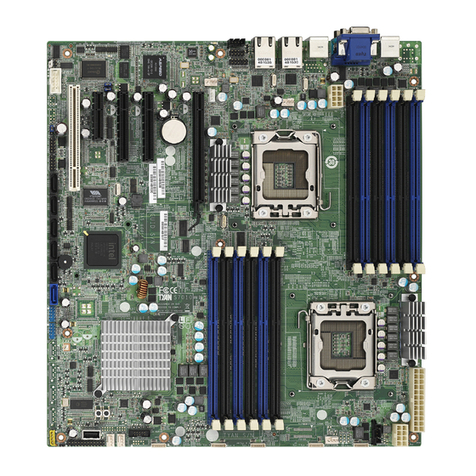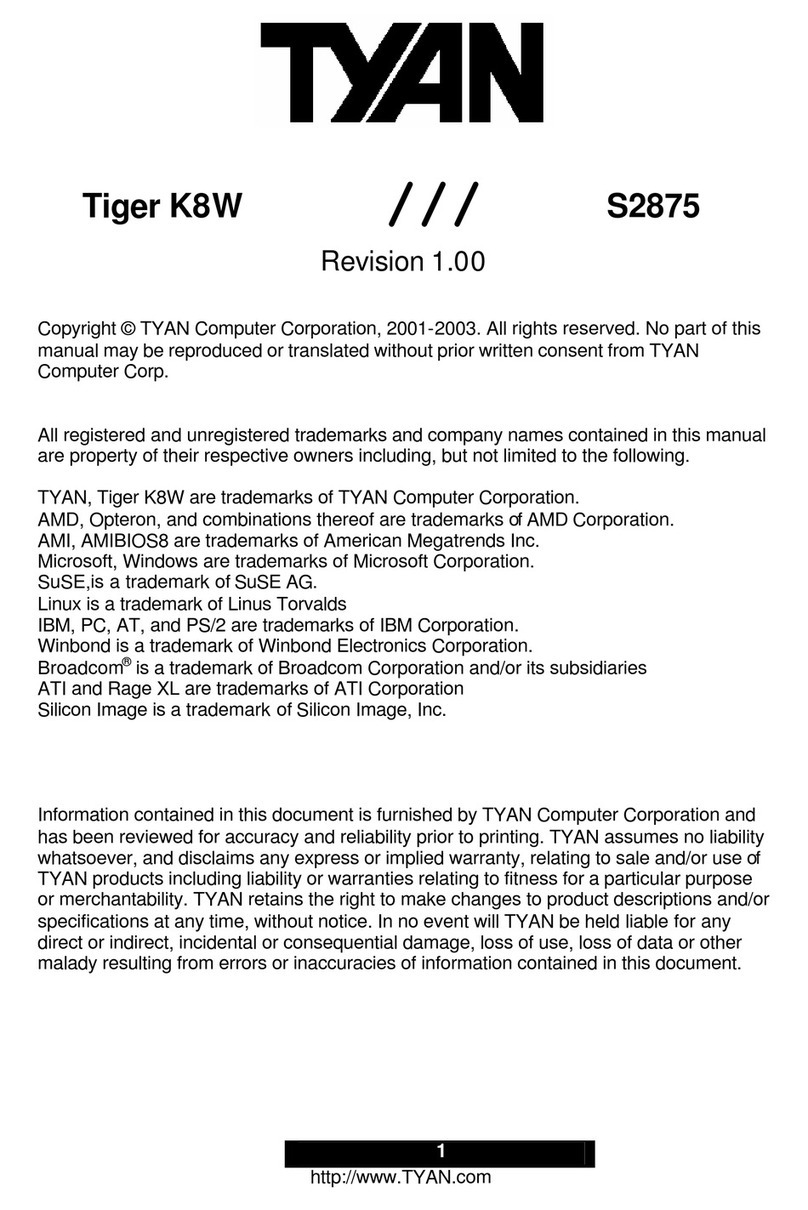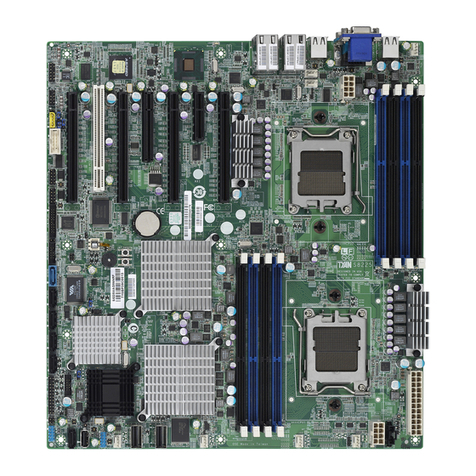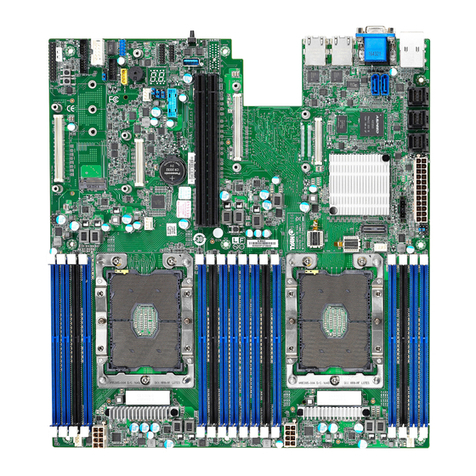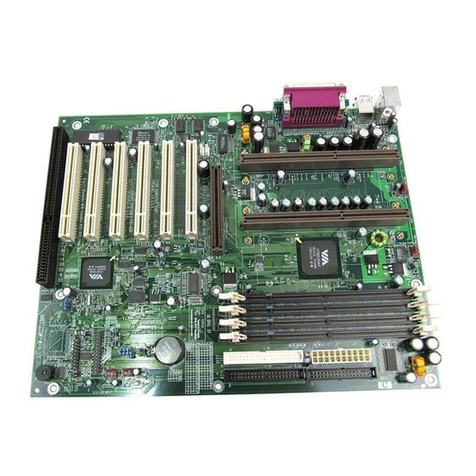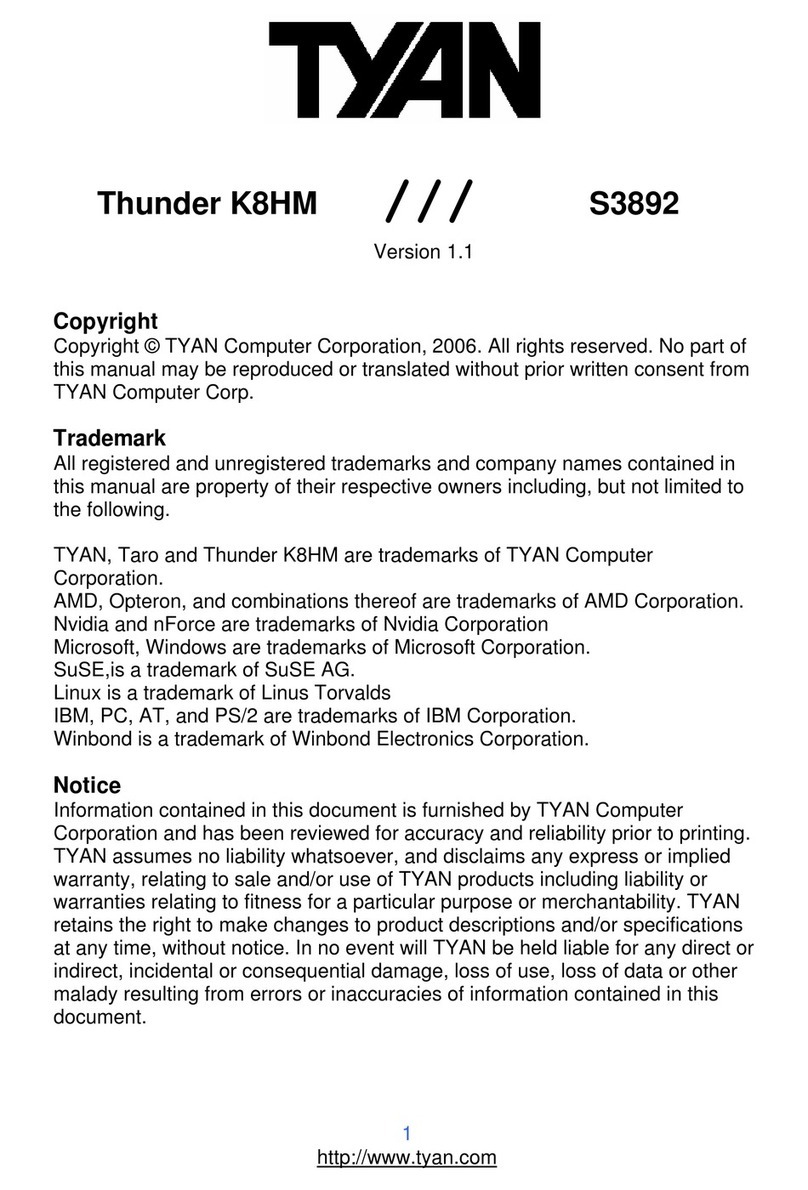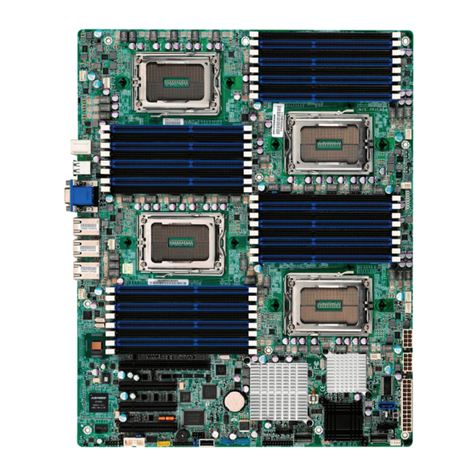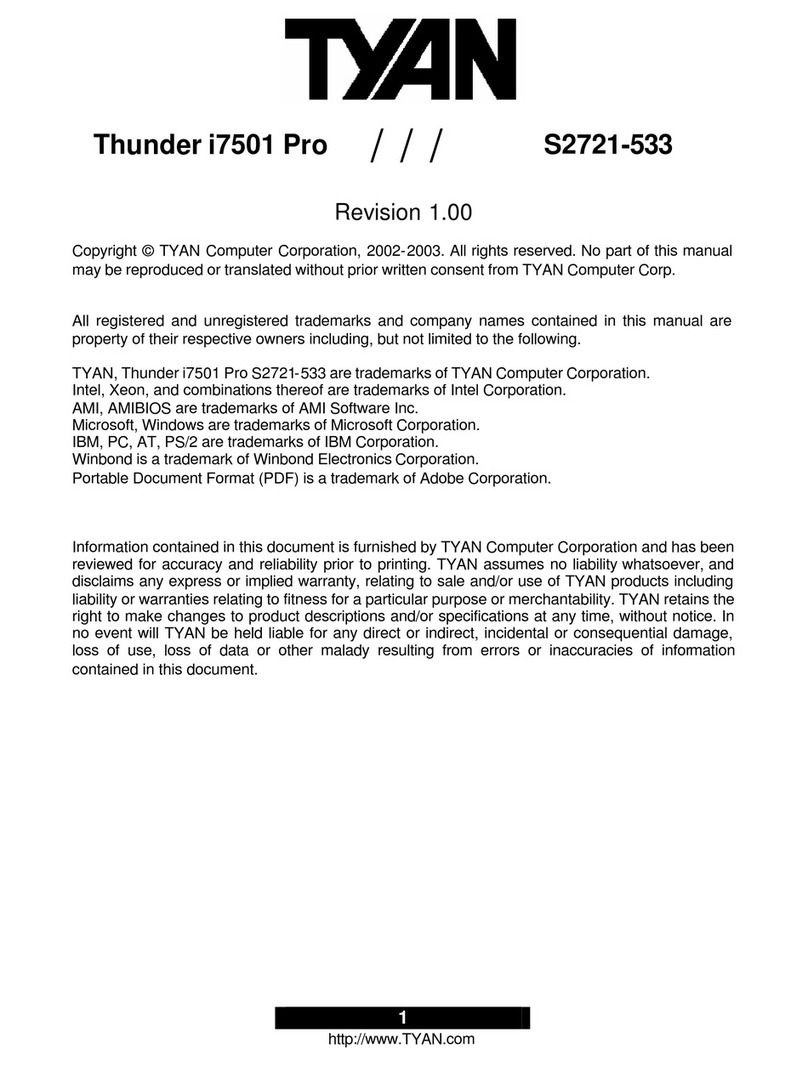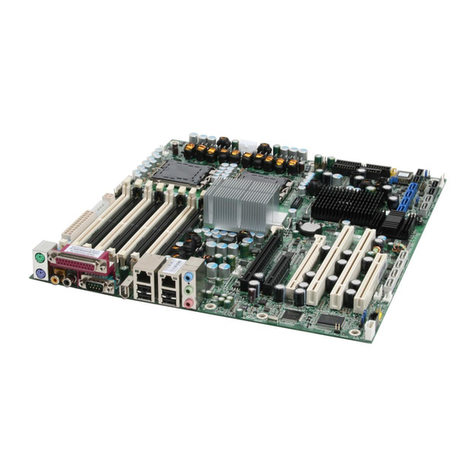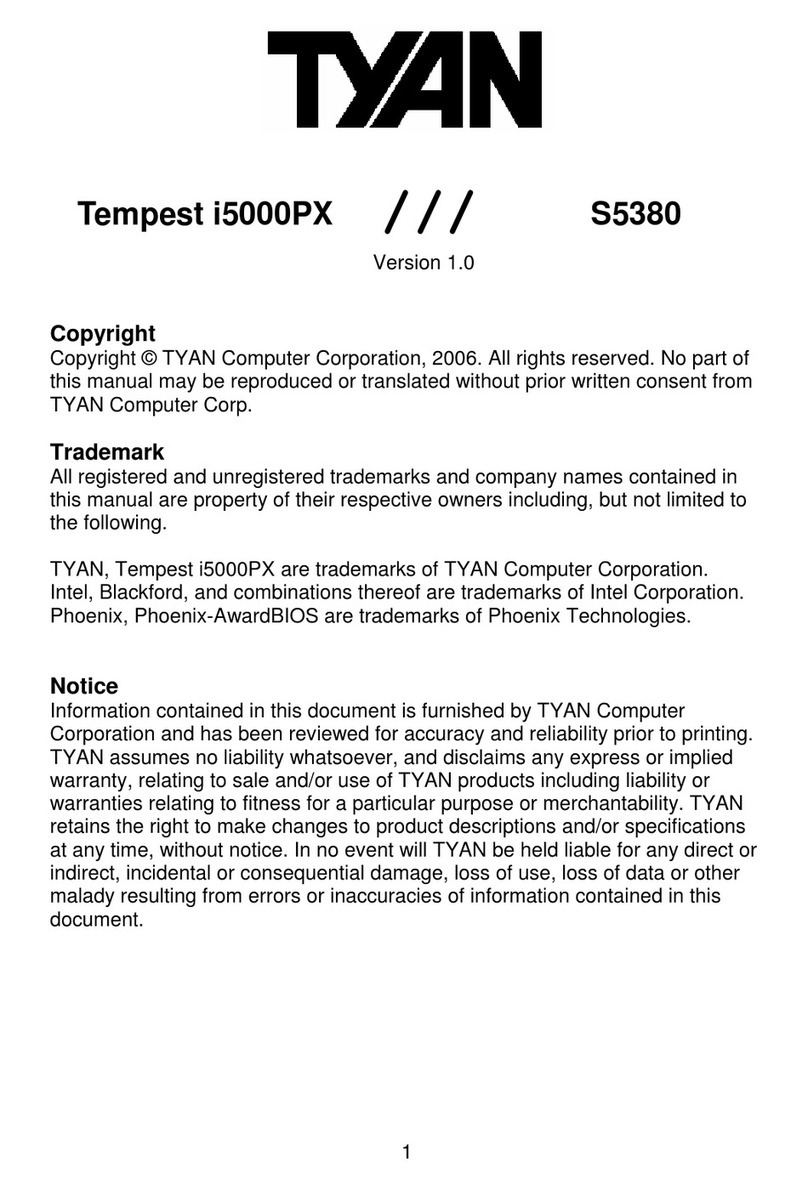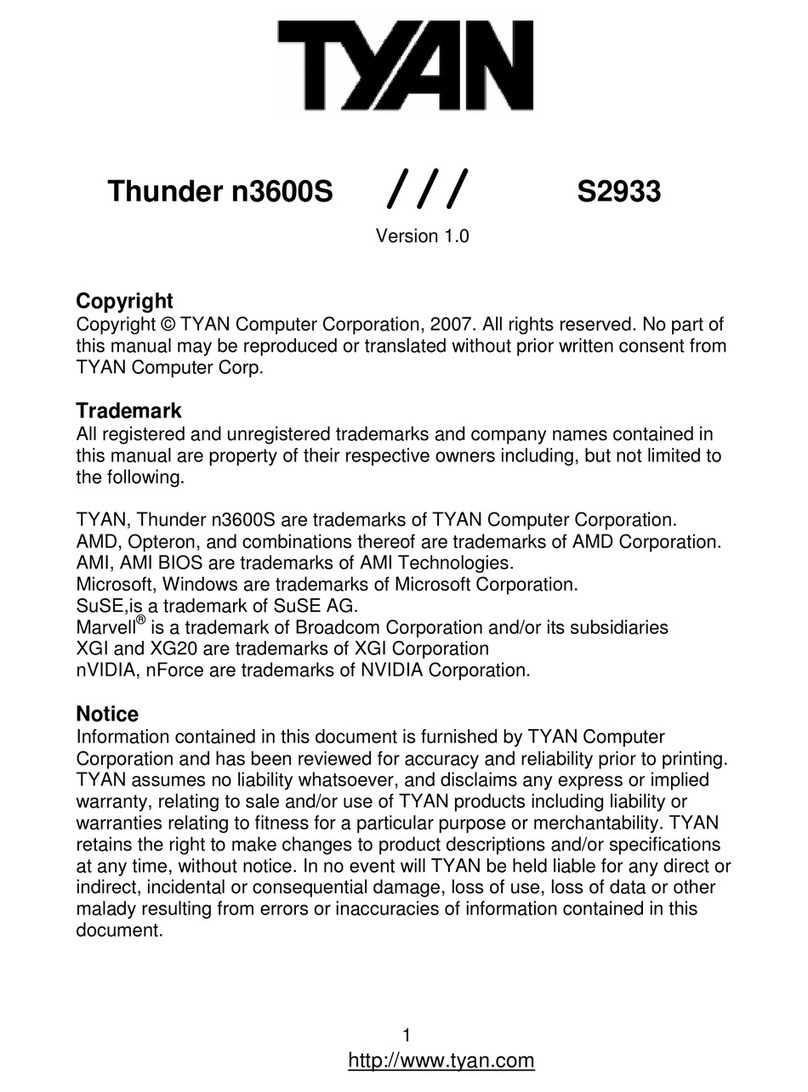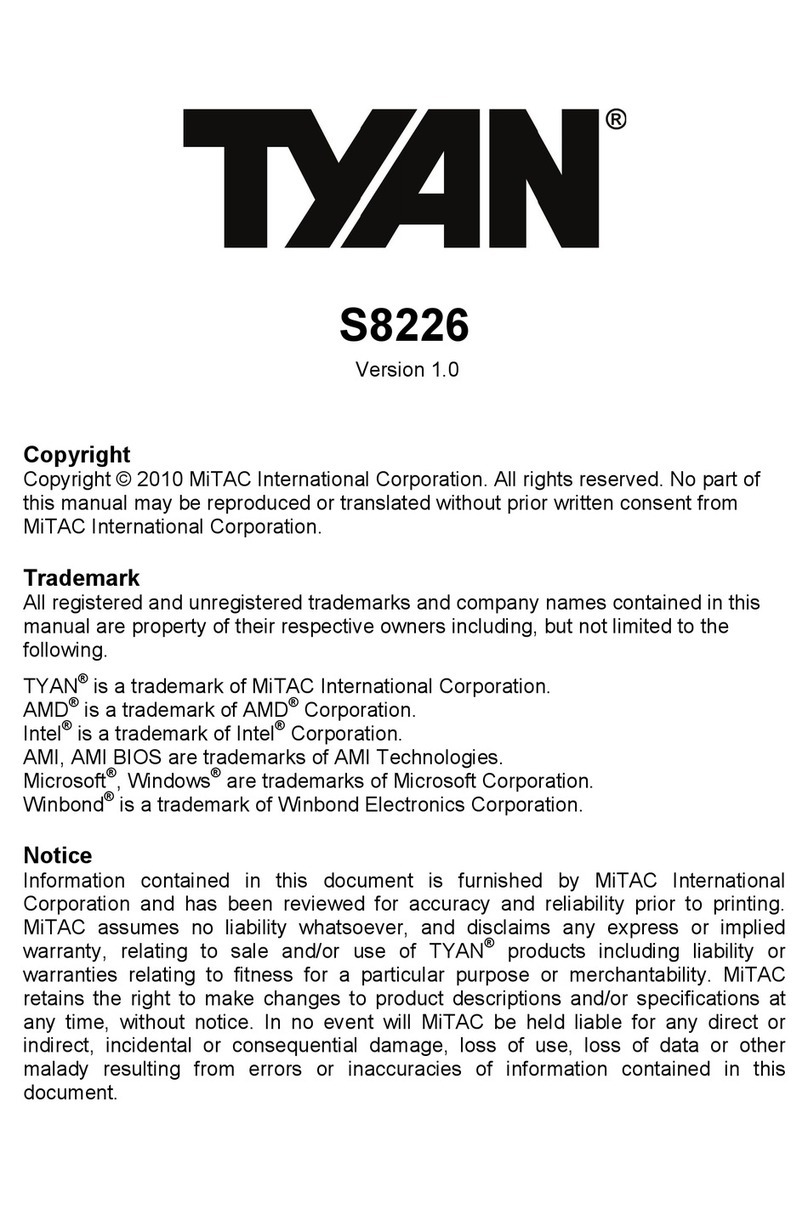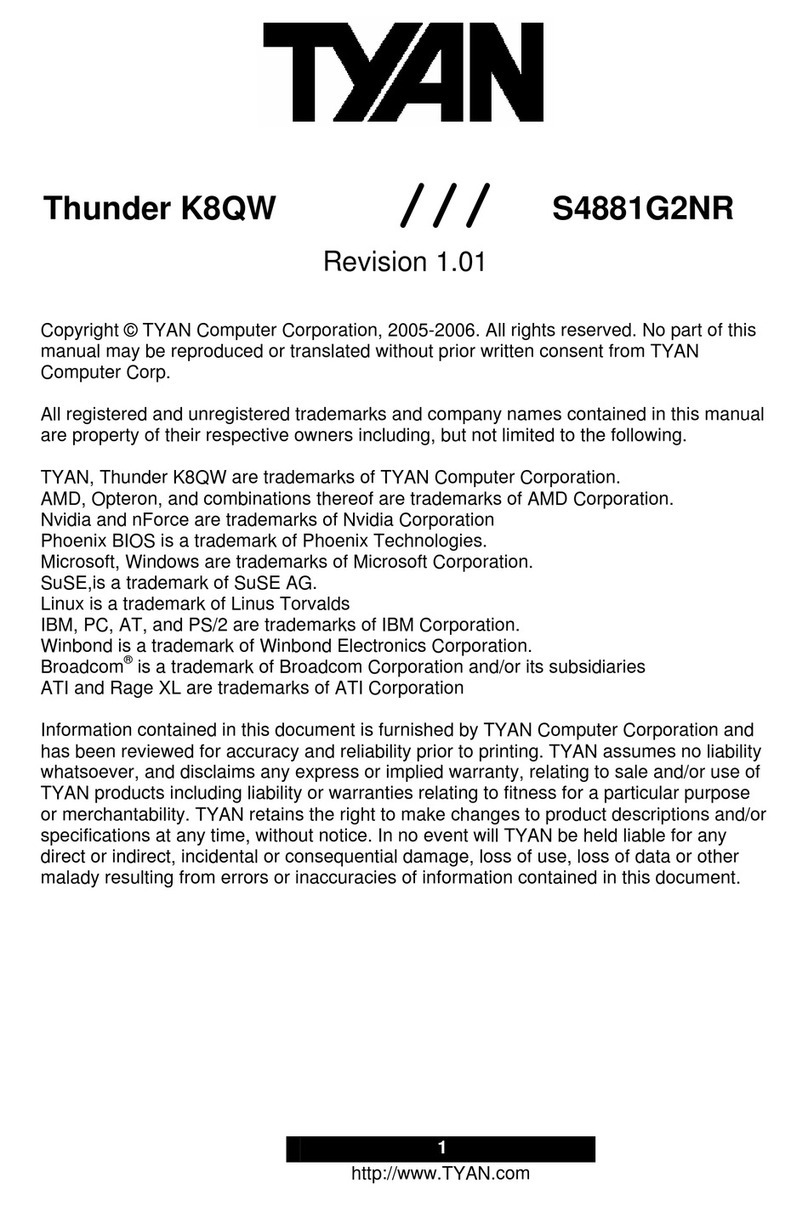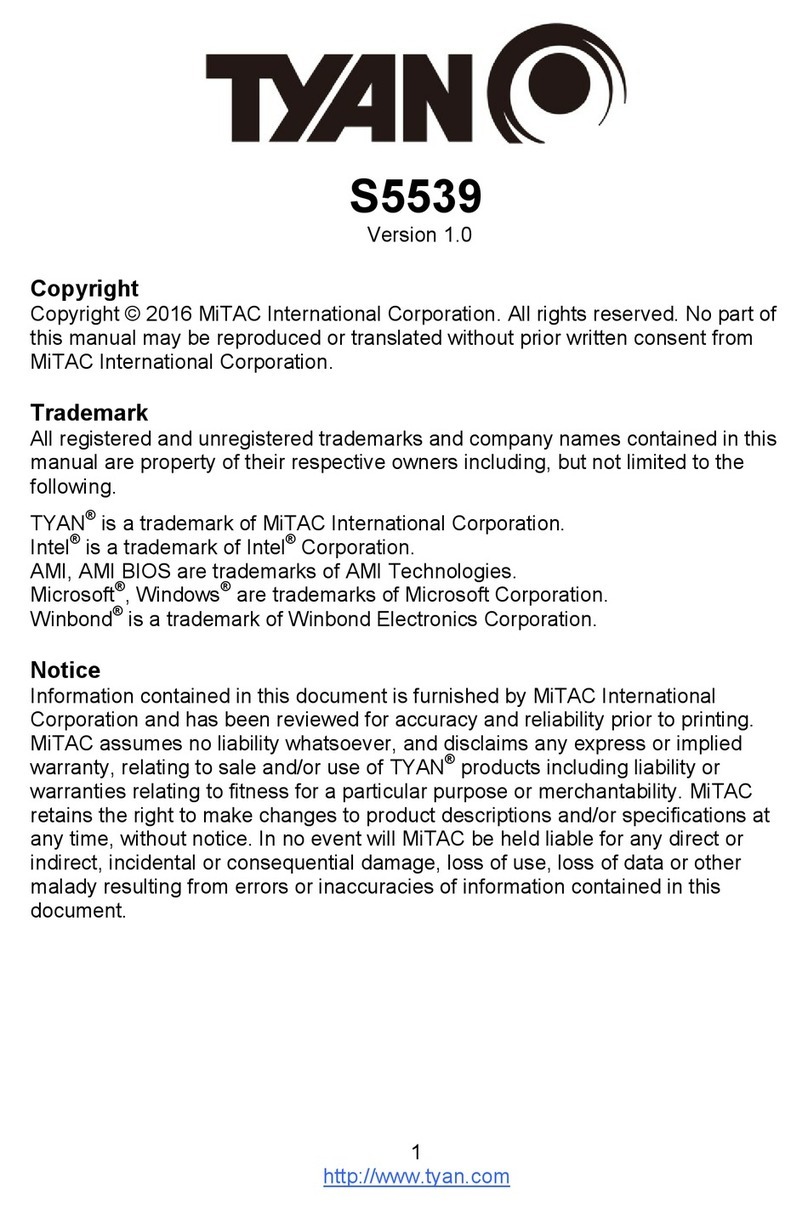
1S1564-001-01 www.tyan.com
TableOfContents
1.Introduction.......................................................................3
1.1 Overview................................................................3
1.2Hardware Specifications..........................................4
1.3Software Specifications.......................................... 5
2.Board Installation.............................................................. 6
2.1 Unpacking..............................................................6
2.2 Installation.............................................................. 6
3.S1564OnBoardResourceSettings................................. 7
3.1S1564BoardLayout & JumperLocations................ 7
3.2 Quick Reference for Jumpers.................................. 8
3.3 CMOS RTC............................................................12
3.4Speaker Connector..................................................12
3.5 Turbo Switch.......................................................... 12
3.6Turbo LED Connect................................................12
3.7 Reset Connector..................................................... 13
3.8Flash EPROM Jumpers.......................................... 13
3.9 CMOS & Password Reset...................................... 13
3.10DRAM Installation................................................ 14
3.11CPUInstallation.................................................... 17
3.12 Cache Memory.................................................... 18
3.13UnderstandingDifferentClockSpeeds................... 19
3.14PeripheralDeviceInstallation.................................20
3.15ConnectingThePower Supply...............................21
4.AwardBIOSConfiguration................................................22
4.1Entering Setup....................................................... 23
4.2 Control Keys......................................................... 24
4.3 Getting Help........................................................... 25
4.4 The Main Menu......................................................25
4.5StandardCMOS Setup Menu...................................27
4.6BIOS Features Setup.............................................. 30
4.7Chipset Features Setup............................................33
4.7.1PowerManagementSetup........................38
4.8PCI Slot Configuration.............................................40
4.9IntegratedPeripherals............................................. 42
4.10Load Setup Defaults..............................................43
4.11Password Setting...................................................43
4.12 IDE HDD AutoDetection..................................... 45
4.13Save & Exit Setup.................................................45
4.14KeyboardSettingFunctions....................................46
